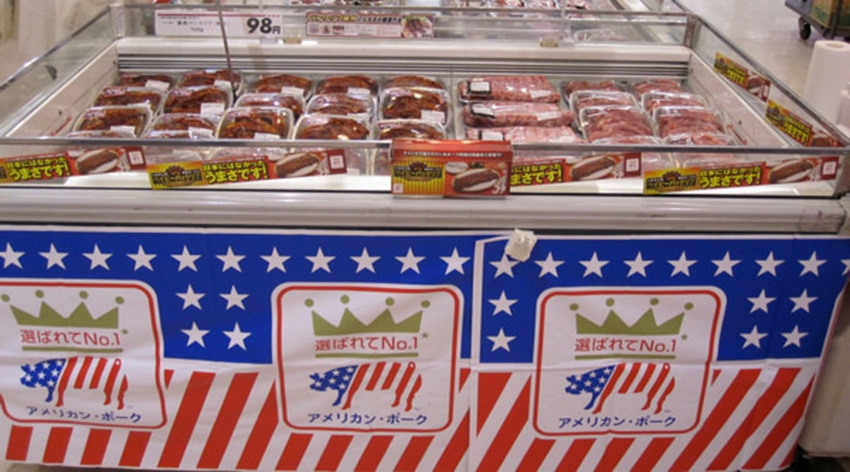Trump trade rhetoric could spell disaster for pork demand
Despite confirmation of outstanding pork demand, futures prices have forged a top. Market is telling us that rhetoric from Washington toward main trade partners could spell disaster.
February 27, 2017

The week ending Feb. 25 saw a top formed in the hog futures market. The top formed about a week to 10 days ahead of expectations. The summer hog contracts rallied on Feb. 21 and tested $80 only to fail and back off. The next morning futures gapped lower and proceeded to plunge lower for two consecutive sessions.
Make no mistake that the action in futures is bearish as the forward-looking markets are forecasting trouble head. It appears that one of the worries of the hog futures market is the tough trade policies of the Trump administration toward Mexico and China. It’s a well-known fact that rural America elected Trump to the White House. The old saying comes to mind: careful what you wish for as you just might get it.
The top in the hog futures market is difficult to digest given that supply is not the surprise element at work here which is many times the case. The surprise element appears to be an outlook for a dramatic decline in demand for U.S. pork. Current demand is outstanding. In fact, in the case of pork bellies, demand has never been stronger. The monthly cold storage report, released on Feb. 23, confirmed that belly stocks were drawn down in January, a very rare occurrence. For the first time ever belly stocks were drawn lower during the fourth quarter of 2016. The recent cold storage report confirmed that record large demand for bacon continued during the first month of the new year. The report also confirmed generally good demand for all pork cuts. Total frozen pork stocks are down 16% compared to this time last year. All cuts are showing stock levels below this time last year with one exception, butts.
However, despite the confirmation of outstanding demand for pork, futures prices forged a top. Why? Because we’re not experiencing any kind of negative supply side news, the only conclusion is that the futures market is forecasting a dramatic change, downward, in demand. When looking at the futures market a top is confirmed in two ways. First, flat prices have declined with all contracts taking out support levels and indeed establishing a new downtrend (closing below their 40-day moving averages).
Second, and perhaps not nearly as clear to see for many, the sharp discount to cash in which all futures contracts are trading is a very bearish indication. For example, the latest CME lean hog index stands at $77.39. April futures are trading at $68, or more than $9 under the cash. The summer hogs, as of this writing, are trading par with the index. Normally, at this time of year, the summer hog contracts are trading $15 over the Iowa/southern Minnesota cash market.
So why the change in demand outlook? The only conclusion I can come up with to explain a sharply lower demand outlook for U.S. pork in the months ahead is fear regarding the trade policies of the Trump administration. The market is telling us, sending the message that abrupt, rough-shod rhetoric toward our major trading partners is going to result in disaster. This is not my opinion but the opinion of the futures market which is a forecasting mechanism comprised of thousands of participants. Sadly, it was rural America that elected Trump. It now appears that his policies toward trade and toward immigration could very well fall on the back of the U.S. farmer. If this indeed occurs, it will rival the grain embargo against the Soviet Union which was enacted by President Jimmy Carter in January 1980.
I was not a commodity broker in January of 1980, but I was a manager of a grain elevator in Illinois. It was a very tough time for the U.S. farmer. Trade policies enacted that hurt U.S. producers are grossly unfair, yet they do happen. We appear to be headed down that road again. Let’s hope not. However, with record large pork and poultry production, rising beef production and record large total meat production coming down the pipe, messing with our best export customers could result in disaster.
About the Author(s)
You May Also Like





